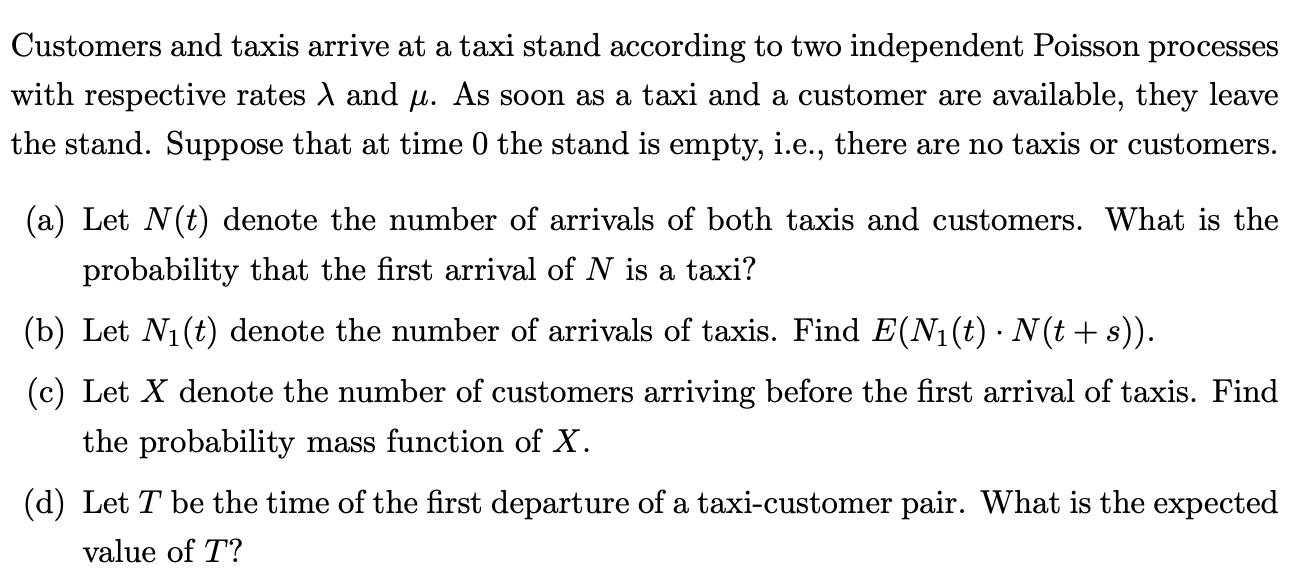Answered step by step
Verified Expert Solution
Question
1 Approved Answer
Customers and taxis arrive at a taxi stand according to two independent Poisson processes with respective rates and . As soon as a taxi

Customers and taxis arrive at a taxi stand according to two independent Poisson processes with respective rates and . As soon as a taxi and a customer are available, they leave the stand. Suppose that at time 0 the stand is empty, i.e., there are no taxis or customers. (a) Let N(t) denote the number of arrivals of both taxis and customers. What is the probability that the first arrival of N is a taxi? (b) Let N(t) denote the number of arrivals of taxis. Find E(N(t) N(t+s)). (c) Let X denote the number of customers arriving before the first arrival of taxis. Find the probability mass function of X. (d) Let T be the time of the first departure of a taxi-customer pair. What is the expected value of T?
Step by Step Solution
★★★★★
3.51 Rating (144 Votes )
There are 3 Steps involved in it
Step: 1
Quiz a In this problem we consider customers and taxis arriving at a taxi stand according to two independent Poisson processes with respective rates A ...
Get Instant Access to Expert-Tailored Solutions
See step-by-step solutions with expert insights and AI powered tools for academic success
Step: 2

Step: 3

Ace Your Homework with AI
Get the answers you need in no time with our AI-driven, step-by-step assistance
Get Started


